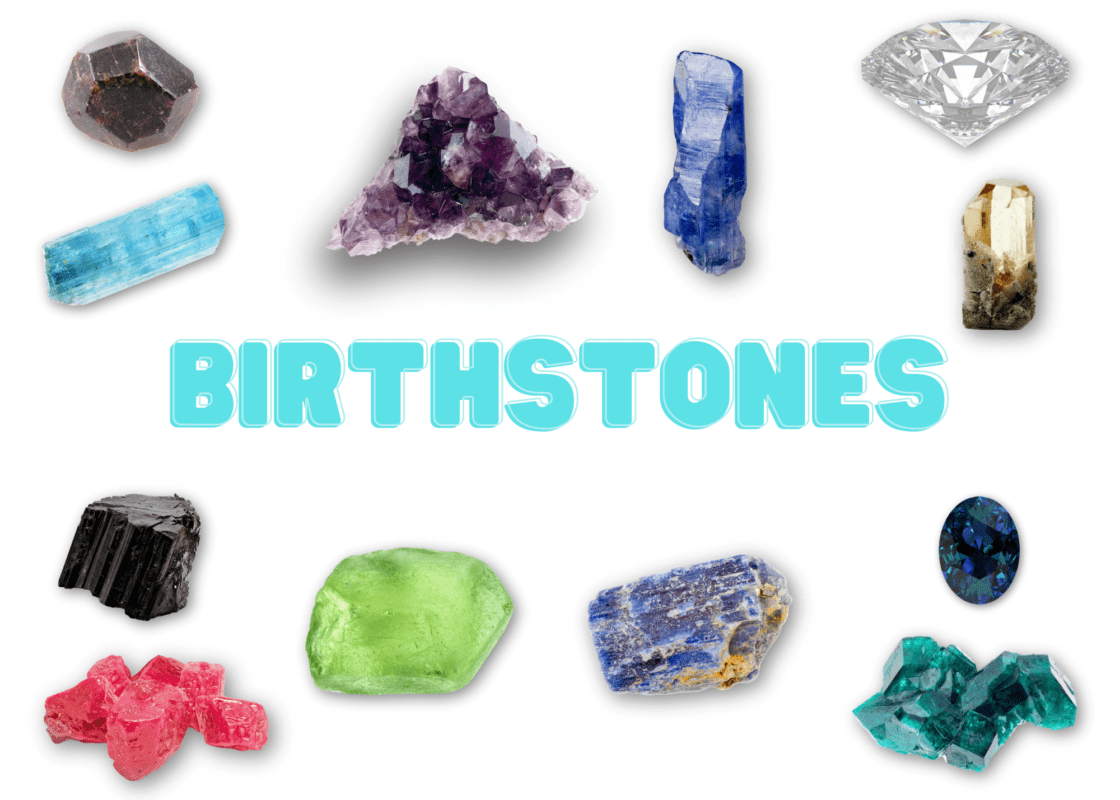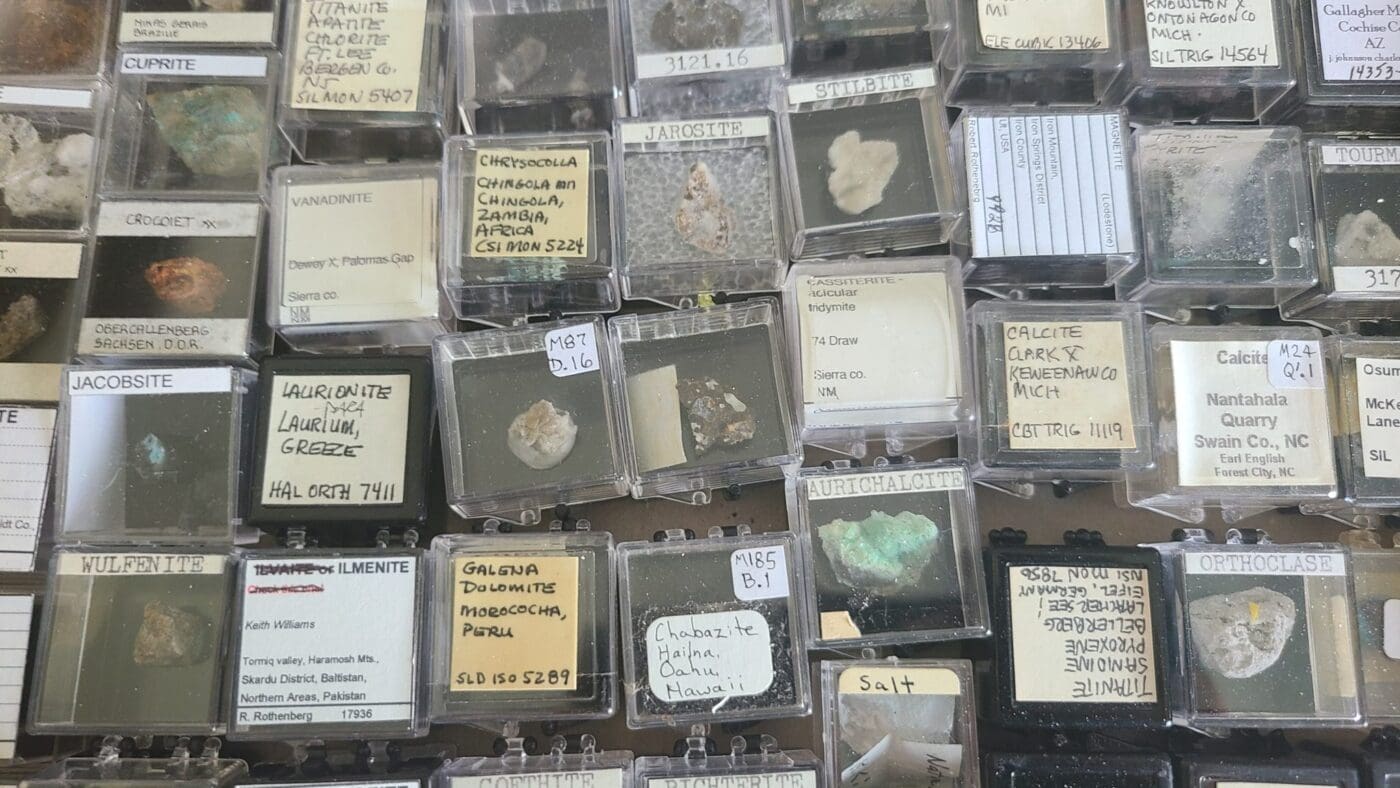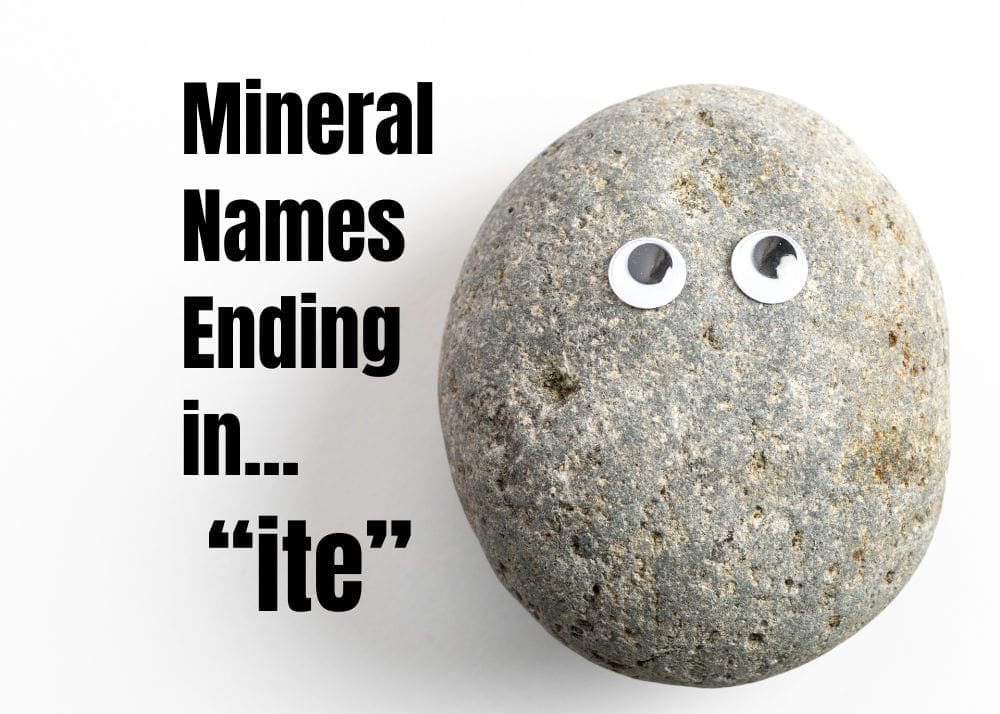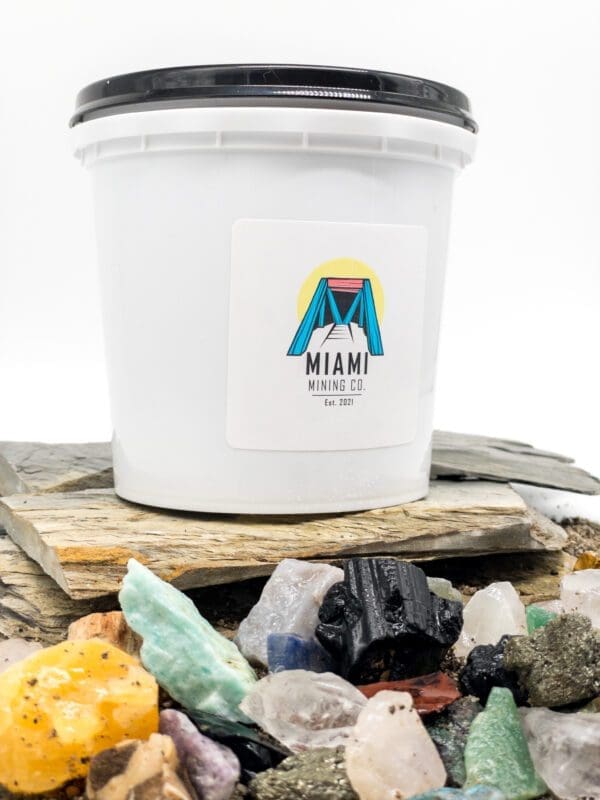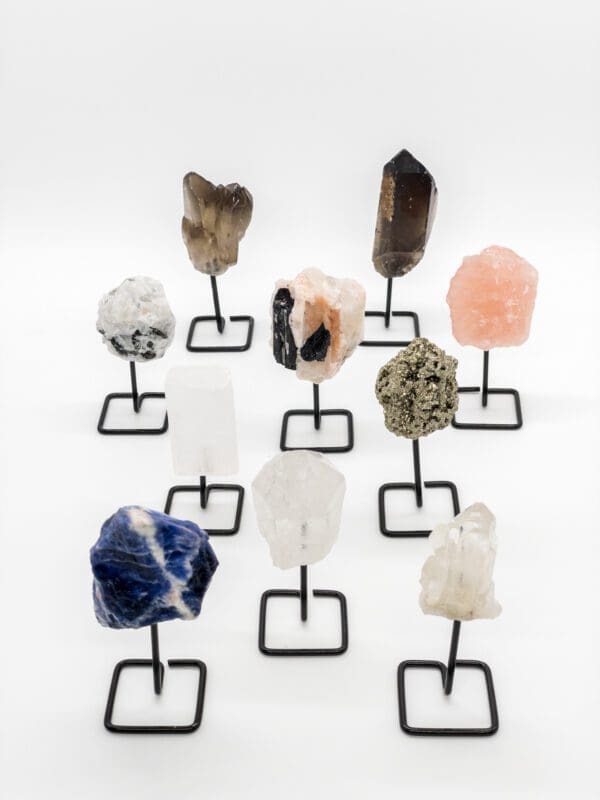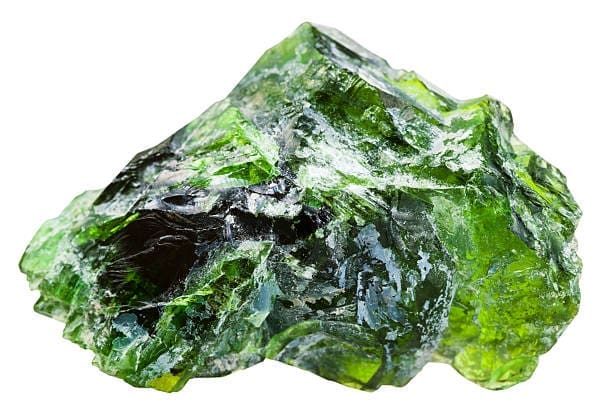Introduction
Definition and Explanation of Birthstones
Birthstones are minerals or gemstones that are traditionally associated with the twelve months of the year, each possessing unique aesthetic and geological properties. While widely recognized for their use in jewelry, where they are cherished for their beauty and purported healing powers, birthstones also hold significant interest in the realms of geology and mineralogy. Here, the focus shifts from ornamentation to the study of their formation, characteristics, and classification within the Earth’s crust. This geological perspective emphasizes the processes that form these gemstones, such as high-pressure environments, temperature conditions, and the presence of specific elements that contribute to the stones’ color and structure.
Significance in Gem and Mineral Collections
Unlike their decorative use in jewelry, in gem and mineral collections, birthstones are appreciated for their raw beauty, rarity, and the story of their origin. Collectors and geologists value these stones not just for their aesthetic appeal but for their exemplary demonstration of geological processes. This collection perspective often prioritizes uncut, well-formed specimens that are exemplary in terms of crystal structure, clarity, and natural color. These specimens provide insight into the geological history of the regions where they are found and are a source of fascination for those interested in the natural sciences.
Historical and Geological Background
Historical Use of Birthstones
Birthstones have been used since ancient times, initially found in the breastplate of Aaron described in the Book of Exodus, which contained twelve gemstones representing the tribes of Israel. This historical artifact reflects the early symbolic use of gemstones, which has evolved through various cultures and epochs. The assignment of stones to specific months can be traced back to ancient civilizations like the Babylonians and Romans, who believed in the astrological and mystical properties of gemstones. Over centuries, these traditions have morphed from religious and magical talismans to personal and fashionable symbols in modern times.
Geological Formation Processes
The formation of birthstones is a testament to the dynamic processes of Earth’s geology. Most gemstones form deep within the Earth under extreme conditions of heat and pressure, making each piece a rare vestige of geological activity. For example, diamonds are formed in the Earth’s mantle from carbon under extreme pressures and temperatures before being brought to the surface through volcanic activity. Other stones, like sapphires and rubies, are products of metamorphic processes, where existing minerals are transformed by heat and pressure into crystalline forms. The unique conditions required for each type of birthstone lead to their distinctiveness in color, clarity, and form, which are prized both scientifically and aesthetically. The study of these processes not only fascinates collectors but also provides geologists and mineralogists with critical insights into the Earth’s interior and its history.
Birthstones by Month: Detailed Exploration
Table of Birthstones
Below is a table that lists each month’s modern and traditional birthstones, along with their mineral classification, hardness on the Mohs scale, specific locations where they are commonly found, and notable physical properties:
| Month | Modern Birthstone | Traditional Birthstone | Mineral Classification | Hardness | Common Locations | Notable Physical Properties |
|---|---|---|---|---|---|---|
| January | Garnet | Garnet | Nesosilicate | 6.5-7.5 | India, Brazil, USA | Resistant to wear |
| February | Amethyst | Amethyst | Quartz | 7 | Brazil, Uruguay | Color variety from violet to deep purple |
| March | Aquamarine | Bloodstone | Beryl | 7.5-8 | Brazil, Madagascar | Light blue to blue-green color |
| April | Diamond | Diamond | Carbon | 10 | South Africa, Russia | High refractive index and dispersion |
| May | Emerald | Emerald | Beryl | 7.5-8 | Colombia, Zambia | Deep green color, often with inclusions |
| June | Alexandrite | Pearl | Chrysoberyl | 8.5 | Russia, Brazil | Color change from green to red |
| July | Ruby | Ruby | Corundum | 9 | Myanmar, Sri Lanka | Vivid red color due to chromium |
| August | Peridot | Sardonyx | Olivine | 6.5-7 | Egypt, China, USA | Yellow-green color, transparent |
| September | Sapphire | Sapphire | Corundum | 9 | Kashmir, Australia, Madagascar | Typically blue, but can be various colors |
| October | Tourmaline | Opal | Borosilicate mineral | 7-7.5 | Brazil, Africa | Wide range of colors |
| November | Topaz | Citrine | Topaz | 8 | Brazil, Nigeria | Flawless transparency, various colors |
| December | Tanzanite | Turquoise | Zoisite | 6.5-7 | Tanzania | Strong trichroism, blue to violet |
Monthly Geological Profiles
Each month’s birthstones are explored in detail below, focusing on their geological characteristics, the best localities for collectors, and notable specimens:
- January (Garnet): Garnets are typically found in metamorphic rocks and are known for their rich variety of colors from deep red to vibrant green. Noteworthy locations include the Rajasthan area in India and parts of Africa. Collectors appreciate garnets for their durability and the sharp crystal forms they can exhibit.
- February (Amethyst): This purple variety of quartz is predominantly found in geodes in volcanic rocks. The large, high-quality amethyst deposits in Brazil and Uruguay are particularly famous. Amethyst is prized for its color and crystal clarity.
- March (Aquamarine and Bloodstone): Aquamarine, a pale blue variety of beryl, is often found in pegmatites. It is treasured for its clear, water-blue color and is primarily sourced from Brazil. Bloodstone, a form of chalcedony with red inclusions of hematite, is valued for its unique appearance and is usually found in India and the USA.
- April (Diamond): Formed at high-pressure, high-temperature conditions in the Earth’s mantle, diamonds are most famously sourced from the mines in South Africa and Russia. They are the hardest known natural material and are coveted for their unparalleled brilliance and fire.
- May (Emerald): These are typically found in hydrothermal veins or in metamorphic rocks. Colombia is renowned for producing some of the finest emeralds in the world, characterized by a deep green color and often visible inclusions known as ‘jardin’.
- June (Alexandrite and Pearl): Alexandrite, with its remarkable color-changing ability, is mined in Russia’s Ural Mountains among other locations. Pearls, unlike other gemstones, are organic and are cultivated primarily in Japan and the South Pacific. Alexandrite is sought after for its rarity and dramatic color shift, while pearls are cherished for their natural luster and smoothness.
- July (Ruby): Rubies are found in marble-hosted deposits in Myanmar, historically known as Burma, which produces some of the finest specimens. Their intense red color, due to chromium impurities, makes them highly desirable.
- August (Peridot and Sardonyx): Peridot is found in both volcanic and meteorite deposits, with notablesources in Arizona, USA, and Egypt. It is recognized for its bright green color and transparency. Sardonyx combines alternating layers of sard and onyx to create a banded appearance, popular since ancient times for cameos and intaglios.
- September (Sapphire): Sapphires are corundum minerals found in a variety of colors, though blue is the most common and valued. The historic Kashmir region between India and Pakistan, Madagascar, and Sri Lanka are famous for high-quality blue sapphires. They are appreciated for their hardness and durability, making them excellent specimens.
- October (Tourmaline and Opal): Tourmaline can be found in a spectrum of colors and is primarily mined in Brazil and Africa. It’s known for its complex crystal structure and vibrant colors. Opal is famous for its unique play of color and is primarily found in Australia, where conditions have favored the formation of this hydrated silica material.
- November (Topaz and Citrine): Topaz is typically found within granite and pegmatite deposits and can display a range of colors, from blue to sherry to imperial pink. Brazil and Nigeria are notable sources. Citrine, a yellow variety of quartz, is prized for its sunny hues and is primarily sourced from Brazil.
- December (Tanzanite, Turquoise, and Zircon): Tanzanite, discovered in the 1960s in Tanzania, is known for its stunning blue-violet color. Turquoise is valued for its distinctive sky-blue to green color and is mainly found in Iran and the southwestern United States. Zircon comes in various colors and is noted for its high luster and strong double refraction, with sources including Australia and Southeast Asia.
Symbolism and Cultural Significance
Folklore and Mythological Stories Associated with Various Birthstones
Birthstones carry a rich tapestry of folklore and mythological stories that highlight their importance beyond mere adornment. For instance:
- Garnet (January): Historically, garnets are believed to protect their wearers during travel and foster deep and lasting friendships. In Norse mythology, it was considered sacred to Freya, the goddess of love and beauty.
- Amethyst (February): In ancient Greece, amethyst was thought to ward off intoxication and keep the wearer clear-headed and quick-witted in battle and business affairs.
- Emerald (May): Often associated with fertility, rebirth, and love. Ancient Romans dedicated this stone to Venus, the goddess of love and beauty. It is also believed to grant the owner foresight, good fortune, and youth.
- Ruby (July): Known as the king of gems, it represents love, health, and wisdom. It was believed wearing a fine red Ruby bestowed good fortune on its owner.
- Sapphire (September): Believed to protect against envy and harm, medieval clergy wore sapphires to symbolize Heaven, while common folk thought the gem attracted heavenly blessings.
These stories and beliefs have been passed down through generations and play a significant role in the cultural significance of these gemstones in various societies.
Cultural Significance in Different Societies
Across different cultures, birthstones have been revered not just for their beauty but for their symbolic values:
- In Indian culture, gemstones have been integral to astrological practices, believed to influence health, prosperity, and spiritual well-being.
- Middle Eastern cultures have long valued birthstones like turquoise and lapis lazuli for their supposed protective powers against evil.
- Western traditions often gift birthstones in jewelry as symbols of love or milestones such as birthdays and anniversaries, but collectors and gemologists appreciate these stones for their geological traits and rarity.
This wide-ranging cultural appreciation has significantly influenced the collection and academic study of birthstones, where their mythological and historical contexts are as valued as their physical properties.
Collecting Birthstones: A Practical Guide
Tips on Starting and Maintaining a Birthstone Collection
- Sourcing: Begin by visiting reputable mineral shows, joining gem and mineral clubs, or connecting with certified dealers. Online marketplaces can be useful but require caution and verification to avoid purchasing fraudulent specimens.
- Authentication and Valuation: Learn to identify common treatments and enhancements (e.g., heating, dyeing). Familiarize yourself with certification processes by recognized gemological institutes which can authenticate the gemstones and provide details about any treatments they have undergone.
- Provenance and Documentation: Documentation or provenance can add value to your specimens. It’s beneficial to keep detailed records including the origin, purchase date, price, and any certificates or appraisals.
Identifying High-Quality Specimens and Understanding Market Values
- Quality Indicators: Look for clarity, color intensity, and natural inclusions, which can tell you a lot about the stone’s authenticity and quality. For instance, inclusions in a diamond (often seen as a flaw in jewelry) can add interest and uniqueness to a collector’s piece.
- Market Research: Stay informed about the latest market trends. Prices can vary widely based on rarity, demand, and current market conditions. Regularly consult published price guides, attend auctions, and engage with other collectors to gauge the market.
- Condition: Always examine the condition of the specimen. Even minor chips or scratches can significantly reduce the value of a gemstone.
By developing a keen eye for detail and a deep understanding of the gems’ inherent properties, collectors can greatly enhance their enjoyment and success in collecting birthstones. Each piece not only adds to the aesthetic appeal of their collection but also brings a slice of geological and cultural history into their hands.
Showcasing Birthstone Collections
Ideas and Best Practices for Displaying Birthstone Collections
Creating an engaging and educational display for a birthstone collection involves more than just placing stones on a shelf. Here are some best practices:
- Display Settings: Use high-quality, consistent display materials that do not detract from the visual appeal of the stones. Velvet-lined drawers or stands, glass cabinets, and professional shadow boxes are excellent choices as they protect the stones while providing an unobstructed view.
- Lighting: Proper lighting is crucial as it can dramatically enhance the colors and clarity of the gemstones. LED lights are preferred because they do not emit UV light or much heat, which can damage sensitive stones over time. Position lights to minimize reflections and shadows while highlighting the unique features of each stone.
- Documentation: Next to each birthstone, include detailed labels that provide information about the stone’s geological type, origin, age, and any historical or cultural significance. This educational aspect can enrich the viewer’s experience and appreciation of the collection.
- Thematic Arrangement: Organize the collection thematically—by color, geographic origin, or month—to tell a story or make educational connections between the stones. This can engage viewers and help them understand the diversity within your collection.
- Interactive Elements: Consider incorporating magnifying glasses or digital screens showing microscopic views or rotating images of the stones, allowing viewers to explore intricate details not visible to the naked eye.
Curating an Educational and Aesthetically Pleasing Collection
- Balance Variety and Theme: While variety is appealing, maintaining a thematic coherence in your display can make the collection more comprehensible and visually appealing. Choose themes that highlight contrasts, such as color or crystal structure, or that draw connections between different specimens.
- Use of Space: Arrange specimens with enough space to avoid clutter while allowing each piece to be appreciated fully. Ensure that larger, more impressive pieces are focal points, but don’t overshadow smaller, unique items.
- Regular Updates: Keep the collection dynamic by rotating specimens or changing themes periodically. This keeps the display fresh for repeat visitors and can provide a deeper dive into different aspects of your collection.
Care and Preservation
Specialized Care Tips for Maintaining the Quality of Mineral Specimens
- Environmental Control: Keep birthstones in a stable environment where temperature and humidity are controlled to prevent damage. Some minerals are sensitive to humidity and temperature fluctuations, which can cause them to fracture or lose their luster.
- Handling: Always handle birthstones with care to avoid scratching or chipping. Use gloves or clean hands to prevent oils from the skin from accumulating on the specimens.
Cleaning and Storage Advice Tailored to Different Types of Birthstones
- Cleaning Techniques: Use the appropriate cleaning method for each type of stone. For instance:
- Hard Stones (e.g., diamonds, sapphires): Can be cleaned with warm soapy water and a soft brush.
- Soft Stones (e.g., opals, pearls): Should be wiped gently with a moist cloth; avoid submerging in water or using harsh chemicals.
- Storage Solutions: Store sensitive stones like pearls in individual soft cloth pouches to prevent scratching. Keep ultraviolet-sensitive stones like amethyst out of direct sunlight to prevent color fading. Use compartmentalized boxes for smaller stones to prevent them from knocking into each other.
- Regular Inspections: Regularly check your collection for signs of deterioration. This includes looking for any cracks, chips, or changes in color that may indicate environmental stress or damage.
Properly showcasing and caring for a birthstone collection not only preserves the physical condition of the minerals but also enhances their aesthetic value and educational potential, making the collection a source of pride and a valuable educational tool.
FAQ Section
What makes a gemstone a “birthstone”?
A gemstone is designated as a “birthstone” primarily due to historical and cultural traditions linking specific stones to the months of the Gregorian calendar. This tradition is believed to have biblical origins, specifically relating to the Breastplate of Aaron described in the Book of Exodus, which contained twelve gemstones representing the tribes of Israel. Over time, these associations have evolved due to folklore, market influences, and various gemological associations endorsing certain stones to correspond with each month.
How do I verify the authenticity of a birthstone specimen?
Verifying the authenticity of a birthstone involves several steps:
- Visual Inspection: Use a jeweler’s loupe or a microscope to look for natural inclusions and characteristics typical of the gemstone.
- Certification: Obtain a certificate of authenticity from a reputable gemological laboratory, such as the Gemological Institute of America (GIA) or the American Gem Society (AGS), which can confirm the gemstone’s identity and any treatments it may have undergone.
- Professional Appraisal: Consult with a certified gemologist who can perform tests and provide a professional evaluation of the stone’s authenticity and value.
Are there any birthstones that are particularly rare or valuable for collectors?
Yes, some birthstones are notably rare and valuable:
- Alexandrite (June): Known for its color-changing ability, high-quality specimens are exceptionally rare and sought after.
- Red Beryl (alternative for October): Far rarer than diamond and most other gemstones, red beryl is highly prized among collectors.
- Tanzanite (December): Found only in a small mining area near the Mererani Hills of Northern Tanzania, its limited availability makes it particularly valuable.
What tools and resources are recommended for aspiring birthstone collectors?
For aspiring collectors, the following tools and resources are indispensable:
- Magnification Tools: A jeweler’s loupe or a microscope is crucial for examining gemstones closely.
- Reference Materials: Books and guides on gemology, such as those published by the GIA, provide essential information on gemstone properties and identification.
- Online Forums and Communities: Websites like Mindat.org and the International Gem Society offer forums where collectors can share information and learn from each other.
- Gem Shows and Exhibitions: Attending these events allows collectors to meet experts, view a wide range of specimens, and purchase quality stones.
Conclusion
Reflections on the Enriching Experience of Collecting Birthstones
Collecting birthstones offers a unique intersection of natural beauty, deep history, and scientific inquiry. Each stone not only brings aesthetic pleasure but also tells a story of geological processes and human culture spanning millennia. This hobby enriches one’s appreciation for the natural world and its myriad of treasures.
Encouragement for Collectors
Whether you are just beginning your journey as a birthstone collector or are an experienced enthusiast, there is always more to explore and appreciate in the world of gemstones. By deepening your understanding of the geological formations and historical contexts of these stones, you enhance not only your collection but also your connection to the Earth’s past. Collectors are encouraged to continually engage with the community, participate in educational opportunities, and share their passion and knowledge with others, fostering a greater appreciation for these geological wonders.

